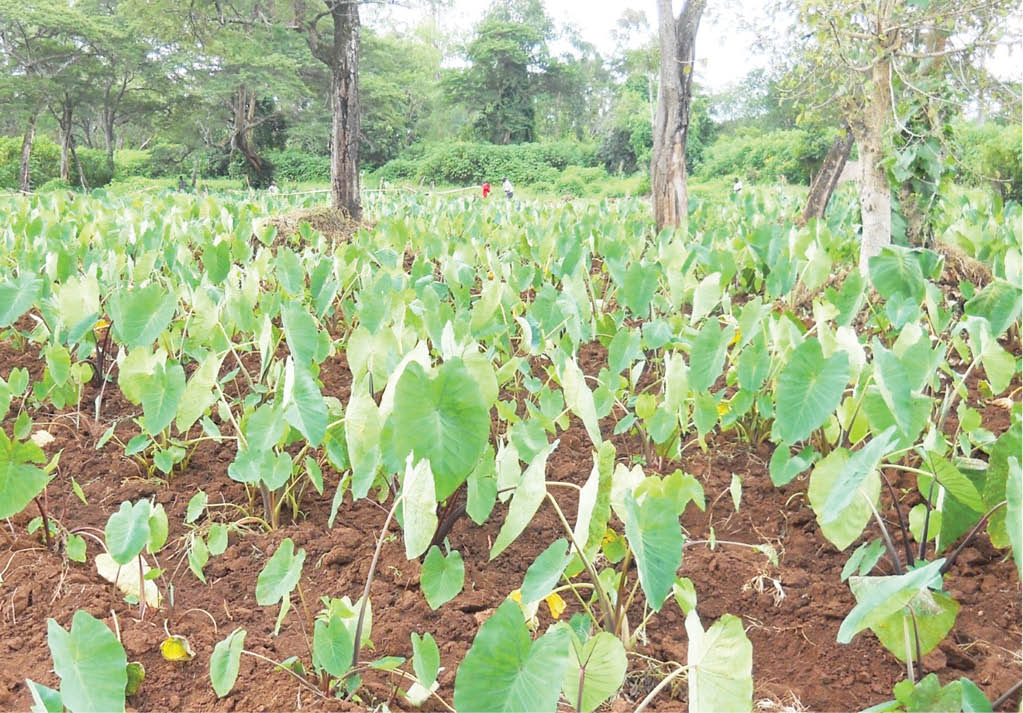Cocoyam (Taro and Tannia) is a staple root crop in many developing countries in Africa, Asia and the Pacific.
Despite its nutritional qualities and the potentials to improve the livelihoods of many smallholder farmers, the crop has received little attention from both government and research communities, the CGIAR research on Roots, Tubers and Bananas. noted.
- Why Katsina farmers abandoned large scale cocoyam farming
- Man risks imprisonment for allegedly stealing cocoyams
Statistics show that Nigeria is the leading global producer of cocoyam with about 5.49 million metric tonnes annually, amount to 45.9 % of the world output and 72.2 % of West African output.
Dr. Godwin Chukwu of the Department of Soil Science and Meteorology, Michael Okpara University of Agriculture, Umudike, published a research titled “land use for cocoyam in Nigeria- implications for cocoyam rebirth,” in the Global Journal of Agricultural Research.
In the research, he noted that the crop ‘’has high economic potential, not only as food (main meal, snacks and adjunct in thickening soup) but as an agro-industrial raw material for pharmaceutical, confectionery, and livestock industries.
‘’In Nigeria, the bulk of cocoyam produced is consumed as food, either as a primary product (corm, cormel, leaves and inflorescence) or as a secondary product (flour, cake, crisp, and chip).
‘’It is of interest to note that among root and tuber crops in Nigeria, cocoyam is the only fully edible, because the corms and cormels are eaten in various food forms while the leaves and flowers are commonly used as spice to garnish and flavour food. The corms are good sources of carbohydrates with easily digestible starch,” he said.
According to him, cocoyam is nutritionally superior to major competitor like cassava and yam, in terms of digestibility, contents of crude protein and essential minerals, such as Ca, Mg and P. In phytomedicine, a daily consumption of roasted cocoyam with palm oil for three months is recommended for diabetes treatment.
He said research has revealed cocoyam potential in the prevention of prostate and breast cancer.
“Increasing awareness and concern for environmental quality reveals that the small starch granules of cocoyam are better sources of raw starch for the production of biodegradable plastics than those from cassava, yam and potato,” Dr Chukwu noted.
Dr Alfred Okwuchukwu Ubalua of the National Root Crops Research Institute (NRCRI), Biotechnology Research and Development Center said cocoyam (Taro and Tannia) “are an important group of tropical root crops providing energy for over 500 million people worldwide, mostly in the tropics.
Dr Ubalua, however, noted that in 2004 alone, Nigeria accounted for 35.5% of the World’s total production of cocoyam, although none has ever made it to the International trade market. Ironically, about 72% of cocoyam produced in Nigeria is known to be consumed as food locally, the balance is often wasted through postharvest rot. Production of cocoyam has not been given priority attention in many countries probably because of its inability to earn foreign.
Intending farmers can get more information about the market and agronomy practices from the National Root Crops Research institute, Umudike.

 Join Daily Trust WhatsApp Community For Quick Access To News and Happenings Around You.
Join Daily Trust WhatsApp Community For Quick Access To News and Happenings Around You.